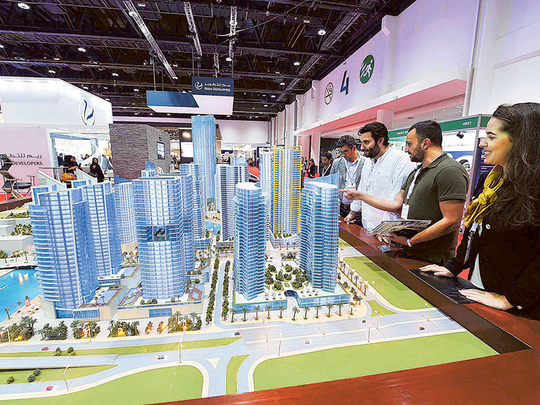
Dubai: There might be some respite for Abu Dhabi’s luxury-leaning residential property market after all — more developers are now “evaluating” whether to go in for mid-market offerings. Unlike at any point in the recent past, the market circumstances and even realty fundamentals are favourable if they do decide to make the switch to creating mid-tier housing.
Most important, land values in likely locations where such projects can be taken up are in their favour.
“Whilst this will require a change in focus due to the perceived lower margins, land values are now becoming viable for developers to consider mid-segment housing,” states the new report from Core Savills, the specialist consultancy. “Both Aldar and Bloom Properties have announced projects which aim to address this housing segment.
“Although there is very limited affordable housing in Abu Dhabi, the ongoing market correction is increasingly making many areas accessible to the mid to lower segments and in turn widening product offerings.”
Abu Dhabi’s property market sure needs a change of emphasis. The ongoing market correction has dented demand at the top end of the residential space, both from a buyer’s perspective as well as for rental.
In Core Savills’ estimates, villa sale prices could be in for a 15 per cent decline, while high-end apartments are likely to see a 7 per cent slip on average during the year, principally on weak demand.
Dubai’s developers have already gone through the required tweaking to mid-market, a transition highlighted by the entry last September of Emaar into this space (through the joint venture Emaar South) as well as by the other master-developer Dubai South. There are others who are also creating mid- to upper-mid residential options for the leasing market.
Interestingly, Abu Dhabi has reinstated the 5 per cent rental cap for 2017. As it is, the “trimming of staff housing allowances and salaries” are already having decisive influence on rental dynamics.
“Vacancy levels have been gradually creeping upwards followed with a sharp drop in rental rate, particularly for the top end of the villa market which saw dwindling demand from C-suite corporates and marked drops over 20 per cent year-on-year,” states the report.
But apartment leases have managed to show a certain resilience, limiting the declines to between 7-10 per cent, while smaller units are still having higher occupancies.
On the likely impact of the renewed 5 per cent rental cap, “(as) the market has already been correcting itself with widespread drops, few tenants are apprehensive that landlords may interpret this law as an opportunity to increase rent by 5 per cent.
“Adding to this is the new 3 per cent municipality fee payable by every expatriate tenant in Abu Dhabi, which has reportedly started to appear in utility bills. This comes as a double shock as it is backdated to February 2016 and the portion of the fee from last year is payable as a single lump sum, rather than monthly.
“This is adding stress to tenants who are already facing rising overall household costs.”
Office realty in Abu Dhabi is where it hurts most
If last year was when high-end office properties felt the pinch of an uncertain economy, this year it could extend to secondary locations too. That would mean rental pressures across the board.
“We forecast average Grade A and B office rents falling by at least 10-15 per cent, a magnitude similar to 2016 rental drops,” says the Core Savills report. “Although oil prices have improved over the last two quarters coupled with the recent Opec announcements of oil output cut down, it is yet to reach a level that can trigger a revival.
“As hydrocarbon linked uncertainty continues, further downsizing and mergers are expected to happen over 2017 as firms gear up to take on a challenging year ahead.”
Landlords with extensive commercial property holdings also need to keep watch on the merger plays involving blue-chip Abu Dhabi corporate houses. How this impact on the real estate holdings and leases of the merged entities is for the future to tell.
In the present, there is still sufficient demand for smaller office units, though supply is yet to catch up. “The availability of such smaller units (of 600-2,000 square feet) remains limited, with many landlords resisting floor division further, despite continued vacancy,” said David Godchaux.











